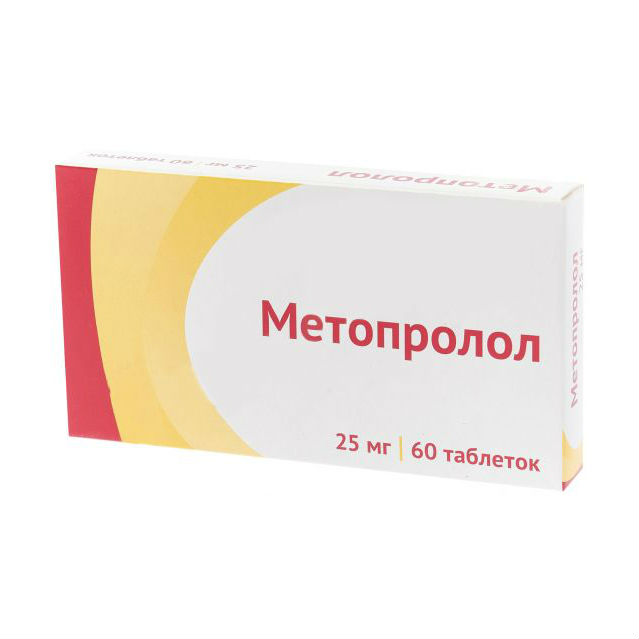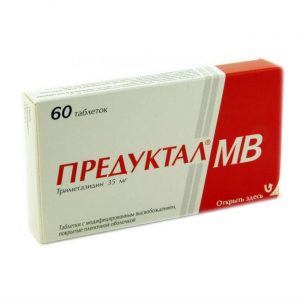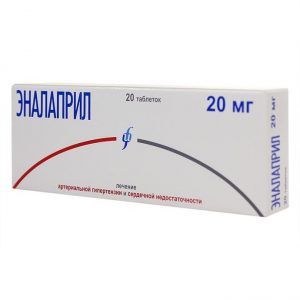Description
Latin name
AMARYL ®
Release form
Tablets.
packaging 60 pcs
Pharmacological action
Cardioselective beta1-blocker without internal sympathomimetic activity. It has a hypotensive, antianginal and antiarrhythmic effect. Reduces the automatism of the sinus node, reduces heart rate, slows down AV-conduction, reduces contractility and excitability of the myocardium, reduces cardiac output, reduces myocardial oxygen demand.
Suppresses the stimulating effect of catecholamines on the heart during physical and psycho-emotional stress.
Causes a hypotensive effect that stabilizes by the end of the 2nd week of course use. With angina pectoris, metoprolol reduces the frequency and severity of seizures. Normalizes heart rate with supraventricular tachycardia and atrial fibrillation.
In case of myocardial infarction, it helps to limit the area of ischemia of the heart muscle and reduces the risk of fatal arrhythmias, reduces the possibility of recurrence of myocardial infarction. When used in medium therapeutic doses, it has a less pronounced effect on the smooth muscles of the bronchi and peripheral arteries than non-selective beta-blockers.
Indications
– Arterial hypertension,
– prevention of angina attacks,
– heart rhythm disturbances (supraventricular tachycardia, extrasystole),
– secondary prevention after myocardial infarction, hypertension, hypertension, hypertension, hypertension )
– prevention of migraine attacks.
Contraindications
Hypersensitivity, cardiogenic shock, AV block II and III degree, sinoatrial block, chronic (at the stage of decompensation) heart failure, sinus node weakness syndrome, severe sinus bradycardia (heart rate less than 60 beats per minute), angina pectoris, myocardial infarction (heart rate less than 45 udmin, PQ interval more than 0.24 seconds, systolic blood pressure less than 100 mm RT.st).
Pregnancy, lactation. Simultaneous intravenous administration of slow calcium channel blockers such as verapamil. Age to 18 years. Pheochromocytoma. patients receiving long-term or intermittent therapy with inotropic drugs and acting on beta-adrenergic receptors.
Use during pregnancy and lactation
Use during pregnancy is only possible if the intended benefit to the mother outweighs the potential risk to the fetus. Metoprolol crosses the placental barrier. In connection with the possible development in the newborn of bradycardia, arterial hypotension, hypoglycemia and respiratory arrest, metoprolol must be canceled 48-72 hours before the planned delivery date. After delivery, it is necessary to ensure strict monitoring of the condition of the newborn for 48-72 hours.
Metoprolol in small amounts is excreted in breast milk. Use during lactation is not recommended
Composition
1 tablet contains:
Active substances:
metoprolol tartrate 25 mg.
Excipients:
silicon dioxide colloidal anhydrous,
microcrystalline cellulose,
sodium carboxymethyl starch (type A),
magnesium stearate.
Shell composition:
hypromellose,
polysorbate 80,
talc,
titanium dioxide (E171).
Dosage and administration of
When administered orally, the average dose is 100 mg / day in 1-2 doses. If necessary, the daily dose is gradually increased to 200 mg. With iv administration, a single dose of 2-5 mg in the absence of effect, repeated administration is possible after 5 minutes.
Maximum doses: when taken orally, the daily dose is 400 mg, with the on / in a single dose is 15-20 mg.
Side effects of
From the cardiovascular system: possible bradycardia, arterial hypotension, impaired AV conduction, the appearance of symptoms of heart failure.
From the digestive system: at the beginning of therapy, dry mouth, nausea, vomiting, diarrhea, and constipation are possible in some cases – impaired liver function.
From the side of the central nervous system and peripheral nervous system: at the beginning of therapy, weakness, fatigue, dizziness, headache, muscle cramps, sensation of cold and paresthesia in the extremities are possible, decreased secretion of tear fluid, conjunctivitis, rhinitis, depression, sleep disturbances, nightmares.
From the hemopoietic system: in some cases – thrombocytopenia.
From the endocrine system: hypoglycemic conditions in patients with diabetes mellitus.
From the respiratory system: in predisposed patients, symptoms of bronchial obstruction may occur.
Allergic reactions: skin rash, itching.
Overdose
Symptoms: severe sinus bradycardia, dizziness, AV blockade (up to the development of complete transverse blockage and cardiac arrest), marked decrease in blood pressure, fainting, arrhythmia / ventricular extrasystole, consciousness, coma, nausea, vomiting, cyanosis, hypoglycemia, convulsions. The first signs of overdose manifest themselves after 20 min -2h after taking the drug.
Treatment: gastric lavage and the prescription of adsorbing drugs, symptomatic therapy: in case of a pronounced decrease in blood pressure – the patient should be in the position of Trendelenburg in case of excessive decrease in blood pressure, bradycardia and heart failure – in / in the introduction with an interval of 2-5 minutes beta-adreno-stimulators – until the desired effect is achieved or in / in the introduction of 0.5- 2 mg atropine sulfate. In the absence of a positive effect – dopamine, dobutamine or norepinephrine. As a follow-up, transvenous intracardiac pacemakers can be installed. At bronchospasm it is necessary to enter in / in beta-adrenomimetics. In convulsions – slow in / in the introduction of diazepam. Hemodialysis is ineffective.
Storage conditions
In the dark place at a temperature of no higher than 25 ° C.
Expiration
See. on the packaging.
Deystvuyuschee substances
Metoprolol



